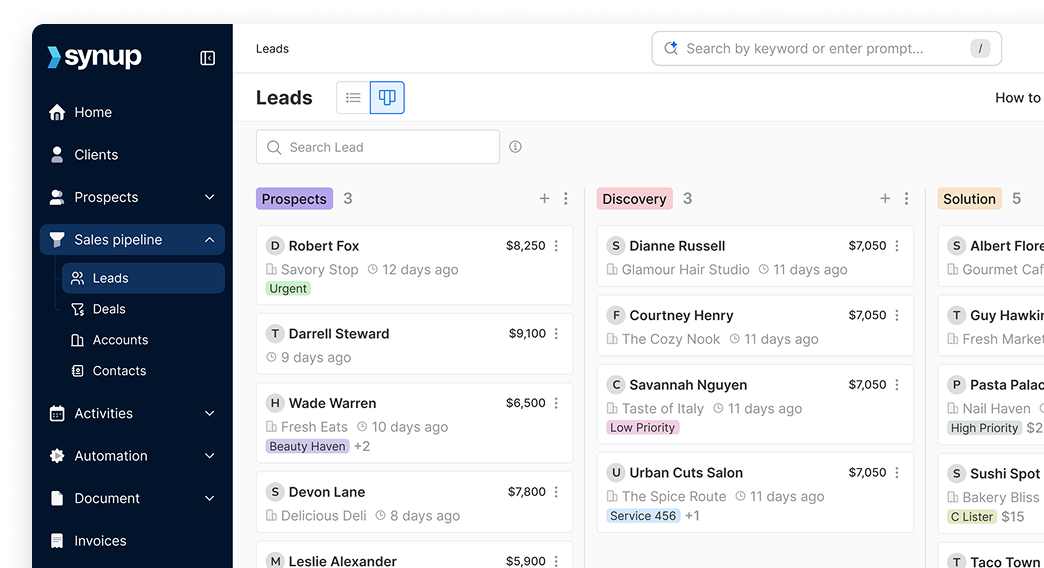Get hyper-local performance insights with Synup's Grid Ranker
Discover hyper-local performance insights to boost your business with Synup's advanced analytics tools.
.avif)
Blind spots in your local performance? Many businesses struggle to understand how their search visibility varies across different neighborhoods or regions within their target area.
And this lack of granular insights can also lead to missed opportunities and wasted efforts. That’s why we build a solution to help you nail down your search rankings in targetted areas and focus on your local SEO strategy.
What is a grid ranker?
Also called a grid map, a grid Ranker tool visually displays your business's search engine rankings across a specific geographic area. It's an invaluable resource for understanding your local search visibility and performance in different parts of your target region.
Let’s say you own a coffee shop and want to know how your business shows up for the keyword “Cafes near me” to someone in your neighborhood. Our grid ranker will give you the exact position your business (or even a competitor) shows up on at different location points around your area.
How will a grid ranker help you?
You’re doing fine with local keyword ranking, why do you even need another tool? A grid ranker can help you solve for some compelling pain points:
Local visibility Issues
Ever wonder why you're getting plenty of customers from one neighborhood but crickets from another? Our tool gives you a clear map of where you're shining and where you're hidden.
Keeping up with local competition
It's tough to stay ahead when you can't see the race. Grid Ranker lets you peek at your competitors' performance, so you can spot opportunities where you can outperform.
Local insights
Grid Ranker helps you focus your efforts where they'll have the biggest impact, saving you resources and boosting results. Local customers want local relevance. Grid Ranker's insights help you tailor your marketing to specific areas, speaking directly to the needs and interests of each local audience.
Generating local rank reports with Synup’s grid map tool
Step 1: Log in to your Synup dashboard, select a specific location (grid ranker is currently available in single location view), navigate to the "Analytics" tab, and in the Local Rank Grid, select "Create Report".

Step 2: Give us some information for:
- Business Name: It will be pre-filled for your selected location. You can change this for any location that exists on Google Maps by typing the name of the business.
- Address: It will be pre-filled as the address for the selected location. This field is also editable (you can select any business from maps to fill it).
- Keywords: Next, give us a list of the most relevant local keywords for the selected location. You can add up to 25 keywords, separated by a comma.
- Grid radius: The default value is 5 miles. You may also choose a different grid radius from the drop-down (in miles or km).
Here’s what we mean by a grid radius >

- Grid points: You can choose a grid size of 3X3, 5X5, and 7X7. The more number of grids, the more granular the insights.

Step 4: Click on the ‘Generate Report’ button and it will get to work.
Step 5: Hurray! Now you can view the report. For a single keyword, you’ll be able to directly see the report. For multiple keywords, we’ll take you to the report dashboard where you can see the progress.

When your reports are ready, the dashboard will show you the average rank on the local finder for that keyword and the share of top ranks.

Step 6: Deep dive into each report one by one by clicking on any listing name. For each grid point, we’ll show you how the business ranks for the specified keyword. All your reports are saved automatically, so you can safely ‘return’ to your dashboard.

Use Grid Ranker to see your hyper-local performance
For businesses with multiple locations, it's difficult to ensure consistent search visibility across all areas without a tool to compare local ranking performance over time.
Synup’s Grid ranking tool will give you an accurate idea of which keywords and locations you must optimize. For agencies, it’s also a good tool to set benchmarks and show your progress to clients.
New to Synup? Book a demo to see it all in action
Have some questions?
How many keywords can I track in a report?
You can add up to 25 keywords per report, with each keyword generating a separate report.
What is the grid radius?
The grid radius is the distance from the center point of your business location to the outer edge of the analyzed area, customizable in metric or imperial units.

How are credits used in the Grid Ranker tool?
Credits are consumed based on the grid size. For example, a 3x3 grid report uses 9 credits, a 5x5 uses 25 credits, and a 7x7 uses 49 credits.
How are credits allotted?
Credits are allotted to each location for your account. For example, if you have 150 credits, each location under your account will have 150 credits.
Are credits carried forward?
No, all unused credits are refreshed and you get the same number of allotted credits each month.
Can I run reports for multiple locations?
Yes, each location has its own set of credits, allowing you to generate reports for multiple locations.
How long does it take to generate a report?
A: It typically takes about 20 seconds for a single keyword report, but the time may vary based on the number of keywords selected and the grid size
Are the reports saved for future reference?
Yes, reports are saved and can be accessed later.




